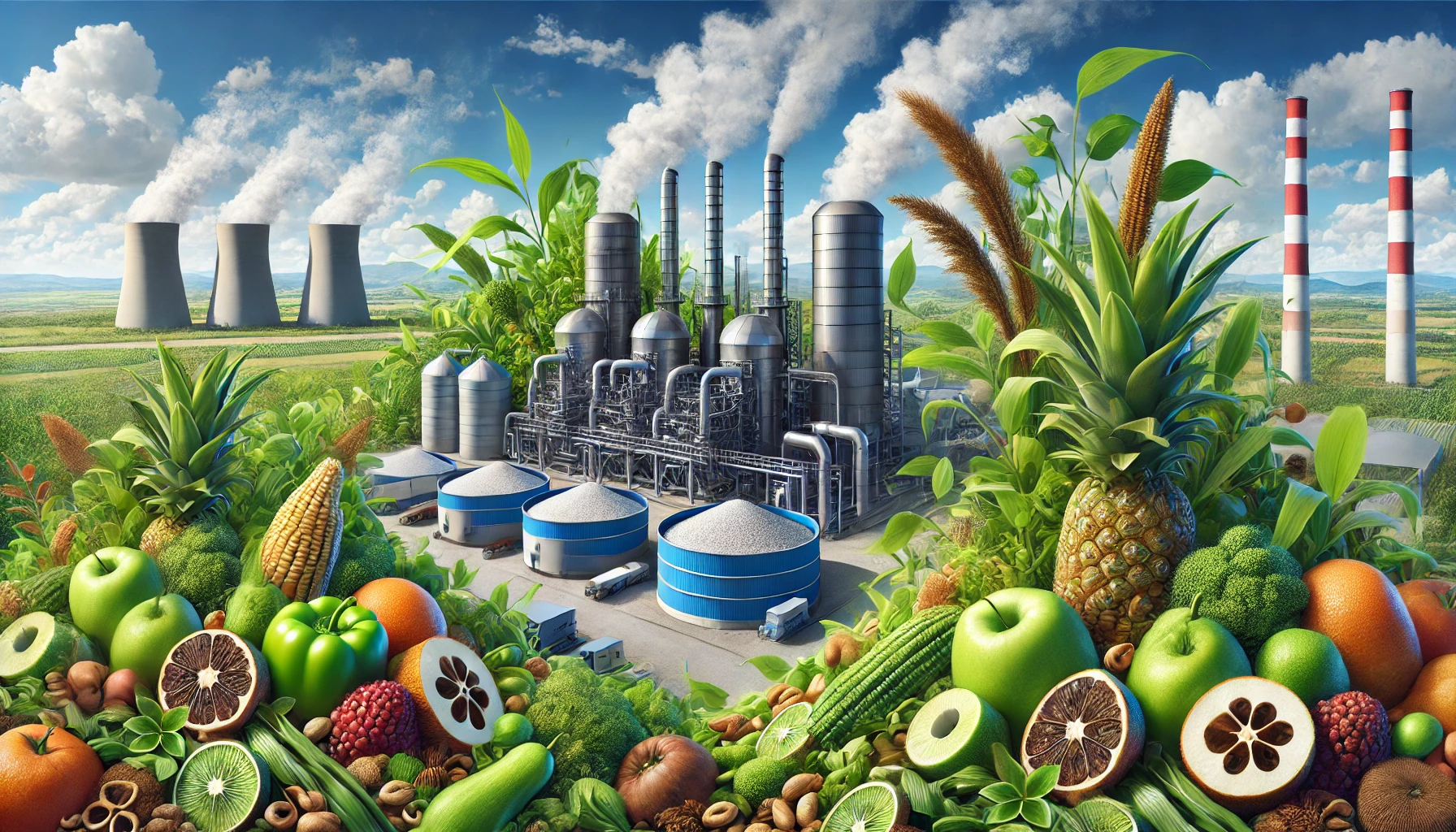Turning Agri-Food Waste into Eco-Friendly Biosorbents for Cleaner Air in Industrial Settings
Researchers from Gdansk University of Technology reviewed the use of agri-food waste as biosorbents for removing volatile organic compounds (VOCs) from air and industrial gases, highlighting their potential as cost-effective and sustainable alternatives to traditional adsorbents. The study emphasizes the need for further research to enhance the efficiency and practical application of these biosorbents in promoting a circular economy.

Researchers from the Department of Process Engineering and Chemical Technology at the Faculty of Chemistry, Gdansk University of Technology, have conducted an in-depth review of the potential of agri-food waste as biosorbents for the removal of volatile organic compounds (VOCs) from air and industrial gases. With an estimated 1.3 billion metric tons of agricultural and food waste generated globally each year, the study underscores the importance of rethinking waste management within the framework of a circular economy. Rather than being discarded as a final product, agricultural waste can be transformed into a valuable resource, aligning with the principles of resource efficiency and sustainability. The paper provides a comprehensive overview of how these wastes can be converted into effective biosorbents through processes such as thermal treatment, surface activation, and doping with elements like nitrogen, phosphorus, and sulfur. This innovative approach offers an eco-friendly alternative to traditional adsorbents, which often struggle with limitations in capturing certain VOCs, particularly those with low molecular weight or polar characteristics.
The Environmental Threat of VOCs and the Need for Efficient Solutions
Volatile organic compounds are a significant contributor to air pollution, and their presence in the atmosphere poses various environmental and health risks. These compounds, which are organic substances with boiling points ranging from 50 to 260 degrees Celsius, can react with other atmospheric substances, leading to the formation of photochemical smog and contributing to ozone layer depletion. Moreover, VOCs are associated with serious health problems, including cancer and damage to vital organs such as the lungs, liver, and kidneys. The primary sources of VOC emissions include industrial activities, automotive exhaust, and domestic fuel combustion. Given the substantial risks associated with VOCs, their effective capture from air and industrial gas streams is of paramount importance. While various methods exist to treat gaseous streams, including catalytic and thermal oxidation, adsorption, and membrane separation, traditional adsorbents like activated carbon, silica gel, and zeolites have limitations, particularly in dealing with specific VOCs that are challenging to capture due to their molecular properties.
Biosorbents: A Sustainable and Cost-Effective Alternative
Biosorbents, derived from biological sources such as biomass, microorganisms, or animal waste, present a promising, environmentally sustainable alternative to conventional adsorption materials. Unlike classical adsorption techniques that rely on synthetic materials, biosorption involves a variety of mechanisms, including physical interactions like electrostatic forces and van der Waals forces, as well as chemical binding through ionic and covalent bonds. The biosorption process can include absorption, surface adsorption, ion exchange, surface complexation, precipitation, and mineral nucleation. One of the most significant advantages of biosorbents is their cost-effectiveness, with an estimated cost of around 0.5 euro per kilogram, compared to the much higher costs of traditional adsorbents, which can range from €100 to €250 per kilogram. Additionally, biosorbents can significantly reduce the amount of solid waste generated and offer sorption capacities comparable to commercial adsorbents. They also provide the potential for recycling biomass when feasible, further enhancing their sustainability credentials.
Challenges and Enhancements in Biosorbent Performance
However, the inherent adsorption efficiencies of raw biosorbents are often constrained by their variable structure, which can be influenced by the type of waste used and its condition before processing. To overcome these limitations and enhance the adsorption capacities of biosorbents, targeted modifications are necessary. These modifications, aimed at increasing the specific surface area of sorbents, are crucial for improving their effectiveness in practical applications. The paper discusses various methods for modifying biosorbents, including thermal treatment processes like pyrolysis, hydrothermal carbonization, and torrefaction, as well as activation methods such as mechanical, physical, and chemical activation. Additionally, the paper explores the doping of biosorbents with heteroatoms such as nitrogen, phosphorus, and sulfur to improve their interaction with VOCs. These modifications are essential for maximizing the adsorption capabilities of biosorbents and ensuring their viability as a practical solution for VOC removal in industrial settings.
Expanding Applications and Regeneration Techniques
The review also addresses the application of biosorbents in adsorbing different types of VOCs, including linear and aromatic volatile hydrocarbons, volatile organochlorine compounds, and other challenging pollutants. The study highlights the importance of understanding the interactions between VOCs and biosorbents to optimize the adsorption process. Moreover, the paper delves into the methods of biosorbent regeneration, which is a key aspect for their continued use in industrial applications. The ability to regenerate biosorbents efficiently without significant loss of adsorption capacity is crucial for their long-term viability as an eco-friendly alternative to traditional adsorbents.
Future Directions in Biosorbent Research
Despite the promising potential of biosorbents, the paper concludes with a call for further research and innovation in the field of waste management. The authors emphasize the need for more studies to fully realize the potential of a circular economy where waste is seen not as a burden, but as a valuable resource that can be repurposed for environmental benefit. This review serves as an important resource for researchers and practitioners interested in exploring the use of agri-food waste biosorbents for VOC removal, marking a significant step toward integrating sustainable practices into industrial air and gas purification processes.
- FIRST PUBLISHED IN:
- Devdiscourse










